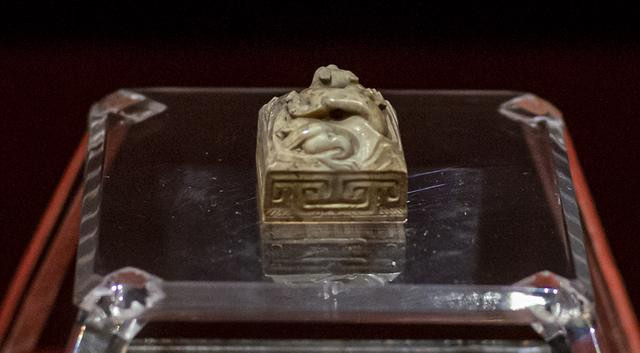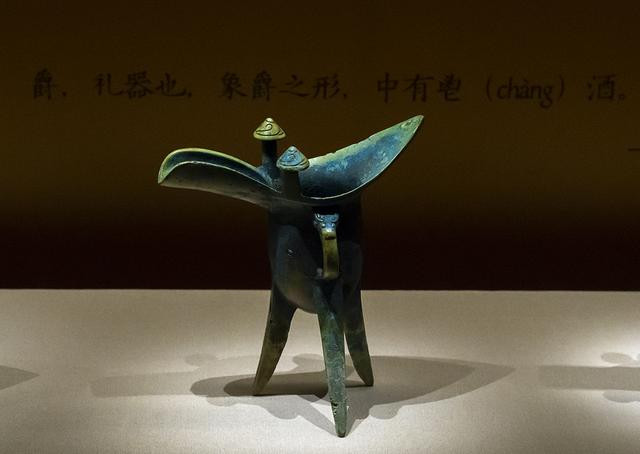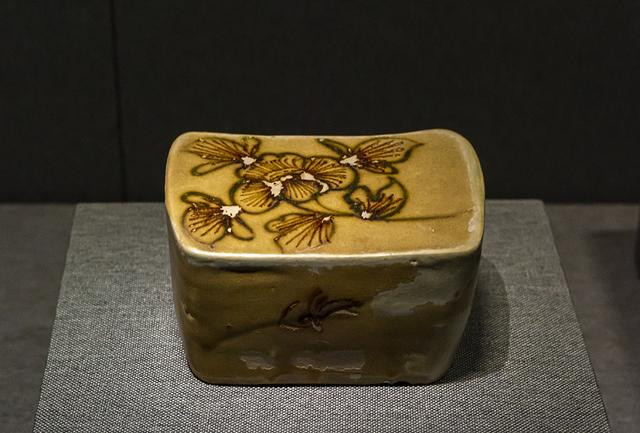Jihai Winter Solstice Tour to Flower City No. 4: Nanyue King Museum
The hotel we stayed in was not only close to the subway station, but also close to the mountains and rivers. After a day of nothing to do, I went for a walk by the water.

There are many big trees by the water's edge, of all kinds.

After shopping for a while, I felt bored, so I walked blindly along the sidewalk downstairs of the hotel. Then I walked to a red wall. It was not painted red paint, but a wall made of red sandstone.

It is the Nanyue King Museum.

During the pre-Qin period, this area of Guangdong was full of barbarian tribes and belonged to clan society. Now we call them states, not tribes. This small clan country is called Fangguo, which is similar to a city-state. During the Warring States Period, these Fang states had connections with Wu, Chu, and Yue, which of course exposed themselves. As a result, after Qin unified China, it sent general Tu Sui (Niansuo) to lead an army of 500,000 to Lingnan to seize territory. These Fangguo beat Tu Sui badly. Not only did they resist his army, but they also cut him with a knife. When Qin Shihuang saw it, he sent Ren Kui as the general and Zhao Tuo as the deputy general to continue attacking Lingnan. We finally settled here, including Guangdong, eastern Guangxi and northern Vietnam. After that, Qin Shihuang established a Nanhai Prefecture in this area of Guangdong, with Ren Kui as the commander and the capital in Panyu. Panyu at that time was actually Guangzhou now. Subsequently, Nanhai Prefecture applied to the Central Committee of the Qin Dynasty to immigrate from the Central Plains, which brought in more than 500,000 strong people and tens of thousands of women of childbearing age. These immigrants were the earliest origins of the Hakka people in the south. Immigrants from the Central Plains brought agricultural technology and culture, gradually strengthening Lingnan society.
By the end of Qin Dynasty, the world was in chaos, and Ren clamor had plans to separate one side. But Ren clamor and the Qin family seemed to be connected by fate. Once the Qin family died, he would be critically ill. Before his death, he called deputy general Zhao Tuo to his bed and told him to do this, and this, and then he kicked his legs and floated into the sky. After Zhao Tuo ascended the post of Nanhai Prefectural Commander, he closed the country to the outside world, cut off contact with the Central Plains, and attacked the other two prefectures in Lingnan and succeeded. In 204 BC, Zhao Tuo became king in Panyu without authorization, openly established the State of Nanyue, and appointed himself King Wu of Nanyue.
In the 11th year of Emperor Gaozu of the Han Dynasty (196 BC), Liu Bang, the Emperor Gaozu of the Han Dynasty, awarded Zhao Tuo the title of "King of Nanyue" and a big seal. As a result, Zhao Tuo surrendered to the Han Dynasty, and Nanyue became a vassal state of the Han Dynasty. In the fourth year of Jianyuan (137 BC) of Liu Che, Emperor Wu of the Han Dynasty, Zhao Tuo died, and his grandson Zhao Mei ascended the throne as King of Nanyue, who was King Wen of Nanyue. Because his grandson Zhao Mei's father died early, this grandson took the lead and ascended the throne. After Zhao Mei took over, he was attacked by the State of Minyue. At that time, the State of Nanyue did not dare to fight against it and asked Emperor Wu of the Han Dynasty for help. Emperor Wu of the Han Dynasty saved Nanyue State, but he asked Zhao Mei to go to the capital to see Emperor Wu of the Han Dynasty to thank him. Zhao Mei did not dare to leave Panyu, so he had to plead illness and send the prince to Emperor Wu of the Han Dynasty to serve as a bodyguard for twelve years. During his sixteen years in power, Zhao Mei made no other achievements than resolving the Fujian and Vietnam crisis. In the first year of Yuanshou of Emperor Wu of the Han Dynasty (122 BC), Zhao Mei died and Prince Zhao Yingqi ascended the throne, becoming King Ming of Nanyue.
The Nanyue King Museum I saw was the tomb of Zhao Mei, King Wen of South Vietnam. This place is called Xianggang Mountain. Zhao Tuo's tomb was hidden by Zhao Mei. It was hidden very secretly and could not be dug out. Current archaeologists estimate that it was in a hidden place on Yuexiu Mountain. Wall roots and rammed earth layers were also dug out in Xianggang Mountain, as well as some pottery bronze ware with Panyu inscriptions. Experts affirmed that this was the city of ancient Panyu.
Zhao Mei's tomb was accidentally discovered in 1983, in a process similar to the discovery of the Terracotta Warriors. This tomb has not been trampled on by the gold-touching captain, so it is rich in production. Later, the "Western Han Dynasty Nanyue King Museum" was built on the tomb. It is a national first-class museum and a national key cultural relic protection unit. Because Nanyue State was during the Western Han Dynasty and was a vassal state of the Han Dynasty, it is now called the King of Nanyue of the Western Han Dynasty.
The most advanced thing in Zhao Mei's tomb is the full-body silk jade garment below, which predates the gold silk jade garment worn by Liu Sheng, King Jing of Zhongshan, at the Han Tomb in Mancheng, Hebei Province. This is by far the earliest, only, and only piece of silk jade clothes seen, equivalent to the present shroud. We used to know that jade wrapped corpses in the Han Dynasty believed that they could maintain youth forever. According to the level of the deceased, they were divided into gold, silver and copper strands. Zhao Mei's silk jade clothes were very creative and a breakthrough material technology product.


Tomb archaeology usually relies on inscriptions to accurately know the identity of the owner of the tomb. After the tomb was lifted, it was found that the owner's chest was not a broken stone, but several seals. The following one is the "Imperial Seal", which is the official seal.

The following one is the "Emperor Wen Xing Seal", which is a private seal, showing that the owner of the tomb is Zhao Mei, Emperor Wen of South Vietnam.

The seal below looks like Tian Huang, but Tian Huang's seal should have been made since the Ming Dynasty. This must be a kind of jade that I don't recognize.

Look at Madam Zhao Mei's jade pendant. It is crystal clear. This is the so-called ring pendant. There is a song "There is a lesbian car" in "Zheng Feng" in the Book of Songs: "There is a lesbian car, and the appearance is as smooth as Shunhua. General Ao is ready to fly, wear jade and jade. He is beautiful and Mengjiang, but he is beautiful and the capital. There was a female accompanying him, her appearance was as good as Shunying. General Ao will fly, Pei Yu will fly. He is beautiful and Meng Jiang, but he will never forget his moral character." The ancients admired jade and praised its beautiful shape and its sound. Nowadays, people read poetry, and they will spin the sound endlessly.
There were four ladies buried in the tomb, but no queen.



Blue glass plates from BC are rare. This must be used as jade.

The green jade corner cup is equivalent to the current gargle cup.

This is a candlestick, which is much more beautiful than today's candlestick.

Look at the jade carvings and snake heads on it, they are extremely exquisite.

Tiger talismans are certificates for sending troops.

The tripod is engraved with the words "Panyu".

The bucket for holding rice, the rice bucket, is very big. If it is full, it will definitely not be able to lift it up, so you still need to have a lot of strength to deal with the rice bucket.

This is the rice pot (certain) for cooking. It is rare.

Gilded copper pots are utensils for holding wine.

Pottery cans, medicine cans.

Pottery smoked stove, censer.

Zhao Mei likes music. Look at the musical instrument he is buried with. Guqin, an antique from BC, was played in Boya's mountains and rivers.

It's rare to see a zither and zither singing harmoniously, right? In the past, it was called "playing the zither and drum zither". In the Book of Songs, there is "I have guests, playing the zither and blowing the sheng".

Have you seen chimes, have you seen this one? This is called a set of chimes (Qing), made of jade, and hung up and knocked to listen to the sound. "The Book of Songs" has the words "both harmonious and peaceful, follow the sound of my chime."

The following one is also rare. It is called Gouyu (hook fishing). It is made of bronze and is set up and beaten. This is the only complete set so far. It also has the inscription "Ninth Year of Emperor Wen" on it, which is very precious. In ancient times, there was a saying that "selecting auspicious gold to cast a sentence to enjoy filial piety", indicating that this sentence should be played during sacrifices and banquets.

There is also an exhibition of foreign unearthed cultural relics in the museum.

Zeng State was the fief assigned to the Nangong family by King Cheng of the Western Zhou Dynasty. It was located in the Han River Basin, which is now the area of Suizhou in Hubei Province. This Nangong family also had the surname Ji, and the Nangong family was named Shi. He was the famous sage of the Western Zhou Dynasty, Nangong Shi, also known as "King Wen's Four Friends". When King Wen of Zhou recruited talents in his early years, Nangong Shi signed up to follow King Wen. After the death of King Wen, Nangong Shi assisted King Wu of Zhou in conquering Zhou and establishing the Western Zhou Dynasty. He moved the nine tripods of the Shang Dynasty to Luoyi. He was one of the meritorious officials and is also described in "The Romance of the Fengshen". After the death of King Wu, Nangong Shi continued to assist Ji Song, King Cheng of Zhou. Zeng State is often called Suiguo in historical books because it is located anywhere. In recent years, research on cultural relics unearthed from the tomb of Marquis Zeng has confirmed that Zeng State is Suiguo. CCTV's "Exploration and Discovery" once had a special article on how to prove through archaeology that the Zeng State was the Suiguo State. The Zeng State went through a total of 700 years from the land of King Cheng of the Zhou Dynasty to the late Warring States Period, before it was finally destroyed by Chu.
The "Treasure of the Zeng State" exhibited at the King of Nanyue Museum this time is a cultural relic unearthed from several tombs of Marquis Zeng in recent years, mainly bronzes.
The earliest bronze Ding Gui was a cooker. Ding was a meat pot for stewing meat, and Gui was a rice cooker for cooking. Later, Ding Gui gradually evolved into ritual vessels. According to the etiquette of the Zhou Dynasty, the emperor arranged nine tripods and eight Guis, the princes arranged seven tripods and six Guis, and the great doctor arranged five tripods and four Guis. After the fall of the Western Zhou Dynasty, etiquette and music were ruined, and the vassals also arrogated to list the nine tripods and eight guis. Below are the Ding and Gui unearthed from the tomb of Marquis Zeng Yi, and the one in the middle is the Gui. Zeng Marquis Yi is expected to die in 433 BC, during the Warring States Period, when his neighboring Chu State was in the fifty-sixth year of King Hui of Chu.

Below is the Yuan Ding of Marquis Zeng Jian. They say that Marquis Zeng Jian is the grandson of Marquis Zeng Yi.

Marquis Zeng built a tripod, and his dragon casting skills were quite good. They said that Zeng Houyu was Zeng Houyi's grandfather.

Zeng Hou Yue (Yue) brought a lid wok (or) tripod. They said that Zeng Hou Yue was Zeng Hou Yi's father.


Marquis Zeng advised to cover the Gui.

This is Marquis Zeng Jian Yun Yi (Wo), which is used for mixing wine. It is equivalent to the mixing pot in bars today.

Marquis Zeng You (yes), a pot for holding wine.

Zeng Guoyi's turquoise inlaid with bronze mirror you is quite delicate. "Jian" is for holding water,"You" is for holding wine, and Jian You is for holding wine.

Zeng Zhongji carried a pot with dragon and phoenix patterns.

Marquis Zeng remonstrated with a jue on his face, and everyone knew that this was a wine cup.

Red copper is intertwined with gold axes (axes), which are made into rice during the sacrificial ceremony. The cast pattern is then filled with gold threads and smoothed with wrong stones. It comes from the tomb of a great official in the Zeng State, not a Marquis.

Bronze axle decoration.

Because of the inscriptions on the pillow, the spear waiting for the dawn is no longer a weapon, but a ritual vessel.

This is called Yue (Yue), a rare weapon.

There is also a special exhibition here, which is more than 200 porcelain pillows donated by Hong Kong's Yang Yongde and his wife to the Nanyue King Museum. Most of Mr. Yang Yongde's personal collections are special series. He has also donated his collections to many domestic museums many times. In addition to these porcelain pillows, he has also donated ancient porcelain, calligraphy and paintings to the Forbidden City and the Guangzhou City Art Museum.
Take a look at this rectangular pillow with brown color and flower patterns in Changsha Kiln in Hunan Province in the Tang Dynasty below.

In the late Tang Dynasty, three-color printed square pillow for kiln in Gongxian County, Henan Province.

In the Northern Song Dynasty, Hebei Province, black flower fish and seaweed patterns on a white background and waist shaped pillows with sitting tiger patterns.

In the early Qing Dynasty, three-color butterfly-shaped sleeping pillow in the northern kiln.

The cemetery went over and took a look. It was not very big. The walls of the tomb are all red sandstone, so the exterior wall in front of this museum is also built of red sandstone. There are actually quite a few Han Dynasty king cemeteries discovered so far. In addition to the tombs of King Nanyue and Marquis Yi mentioned in the exhibits in this museum, there are also the tomb of King Liu Sheng of Jing in Zhongshan, Mancheng, Hebei Province, with gold strands and jade clothes; the tomb of Licang, Marquis of Mawangdui, Changsha, with an undecaying female corpse; and recently, there is the tomb of Liu He, Marquis Haihun, the deposed Emperor of the Han Dynasty in Nanchang, which is the largest. The Han tomb discovered in Beijing is the tomb of Liu Jian, King of Guangyang, Dabaotai, Fengtai, which has the largest and most complete yellow sausage inscription.
Although this Nanyue King Museum is not big, it has many good things, especially bronzes dating from the Han Dynasty more than 2,000 years ago. There are many things that I can't name, and there are also some things that I have heard of for a long time and can see today. During the downtown tour of Huacheng, I also quietly admired a batch of cultural relics, which was very good.
Previous Article:Top choice for a city vacation at your doorstep! Take you to live in Shangri-La, Guangzhou!
Next Article:Hospitality in the post-epidemic era
